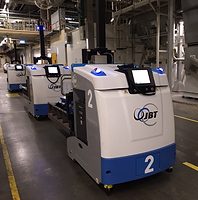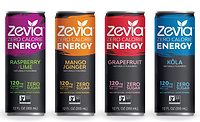The technical age in which we now live has offered consumers access to an endless supply of information at their fingertips. Many utilize this easy-to-access information to educate themselves on the products they are consuming. GMOs are among the product attributes that consumers are considering as they’ve gained greater understanding of what they are eating and drinking. With this, many are turning to the Bellingham, Wash.-based Non-GMO Project and its orange butterfly logo to help guide their choices.
“When the Non-GMO Project first started, many people had never heard of genetically modified organisms,” explains Courtney Pineau, Associate Director for the Non-GMO Project. “Research consistently shows consumers are increasingly aware of the non-GMO movement and are scrutinizing ingredients to source cleaner, healthier products; consumer demand for non-GMO ingredients and products continues to drive major interest in Non-GMO Project verification. In 2016, Nielsen reported that 40 percent of people in North America try to avoid GMOs in the food they are consuming. The same year, Consumer Reports found 72 percent of consumers think it is important to avoid GMOs while shopping and 50 percent are looking for non-GMO labels to guide them.”
As demand for non-GMO products grows, the Project anticipates that its mission will continue to proliferate and evolve as well.
“Since consumer demand for Non-GMO Project Verified choices is higher than ever, we anticipate that we will continue to see strong growth into the future. The Non-GMO Project Butterfly is absolutely critical as new products of genetic engineering continue to enter the marketplace,” Pineau says. “Our Standard continues to evolve to ensure it is clear and meaningful for [the] industry and consumers. In recent versions, we have taken steps to clarify that emerging genetic engineering technologies are included in our definition of GMO. There is a growing attempt on the part of biotechnology companies to distance themselves from the consumer rejection of GMOs by claiming that new types of genetic engineering (for example, gene editing and synthetic biology) are not actually genetic engineering. To bring clarity in the face of this misleading trend, the Non-GMO Project has explicitly included these technologies in our Standard. While some of the products of these technologies may not be transgenic, they are still products of biotechnology as defined by the U.N. Codex Alimentarius Commission.”
Founded in 2007, the Non-GMO Project was built on the principle of transparency. It is known for creating North America’s most stringent standards regarding GMOs while also providing consumers with non-GMO options that are protected by a rigorous and trustworthy verification program, Pineau says.
“The Non-GMO Project’s mission is to preserve and build sources of non-GMO products, educate consumers and provide verified non-GMO choices,” she explains. “One of the primary ways that we achieve this is through our Product Verification Program. Our Standard requires ongoing testing of major GMO risk ingredients and stringent segregation and traceability measures. The Standard has set the bar for what it means to be non-GMO.”
In order to carry out its mission, the Non-GMO Project works with partners throughout the supply chain to preserve and advance the non-GMO supply chain, while also furthering its standard, Pineau says.
“Achieving our mission depends on strategic cooperation across diverse stakeholders. For example, the integrity of our work hinges on the quality of our Standard,” she says. “The Non-GMO Project Standard is a consensus-based document that has been crafted with the insight and expertise of stakeholders reflecting a diverse range of perspective. Beginning with a 60-day public comment period in October and November of 2007, ongoing public comment periods have been established as an important mechanism for keeping the Standard rigorous, current and collaborative.
“We also work with the entire food supply chain to bring more education and awareness to the GMO issue and to help support transparency for shoppers,” she continues. “This has driven huge change in the grocery industry evidenced by the growth we have seen since we first began verifying products in 2010. Annual sales of Non-GMO Project Verified products are close to $26 billion, and we have active relationships with more than 3,000 brands and 12,000 retail doors.”
Currently, more than 45,000 products — including more than 3,600 beverages — carry the Non-GMO Project butterfly verification seal on their labels. The seal leads in the market for non-GMO products and is the fastest growing on-label identifier in the natural foods industry, Pineau says.
“Consumers are increasingly looking for non-GMO options, and our butterfly is the only ‘highly meaningful’ label in the marketplace according to Consumer Reports,” she says. “When shoppers see the Non-GMO Project Verified label on a product, they know that the brand has made a commitment to GMO transparency.”
As a Non-GMO Project Verified Product, partners see several benefits, Pineau notes.
“From a market opportunity standpoint, there is significant demand from consumers for non-GMO choices and this is driving major growth in sales of Non-GMO Project Verified products. Consumers are increasingly purchasing beverages that support their health and well-being, and for a large percentage of consumers this means they are looking for a Non-GMO Project Verified option,” she explains. “… Non-GMO Project Verified products gain the outreach and education support of our nonprofit and the thousands of retailers who support and endorse the Project. Retailers and consumers are looking for the assurance of independent, third-party validation of product claims — and when it comes to GMOs, the Non-GMO Project Verified seal gives consumers the most-trusted alternatives to GMO food and products available today.” BI




